Our Commercial & Residential Process
Call Us Anytime (877) 246-8788 For Immediate Service
Once your home or your business sustains water damage from flood or pipe leaks, you need to start clean-up and remediation immediately. Restoration after water damage can be a difficult task, but hiring a professional restoration company that specializes in water damage will make the problem easier to manage. Action 1 is an expert in the best ways to clean up and save water-soaked equipment, furniture, clothing, document cleaning, other important items and make any necessary repairs.
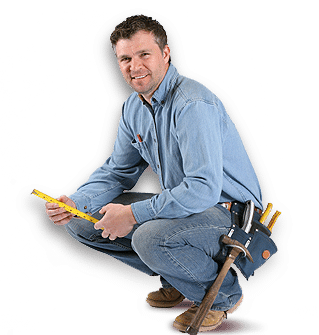
What You Can Do While You Wait

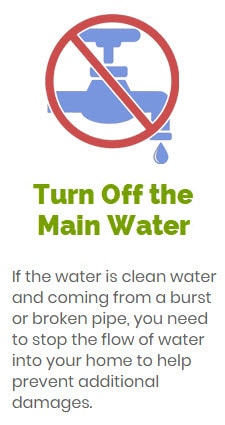


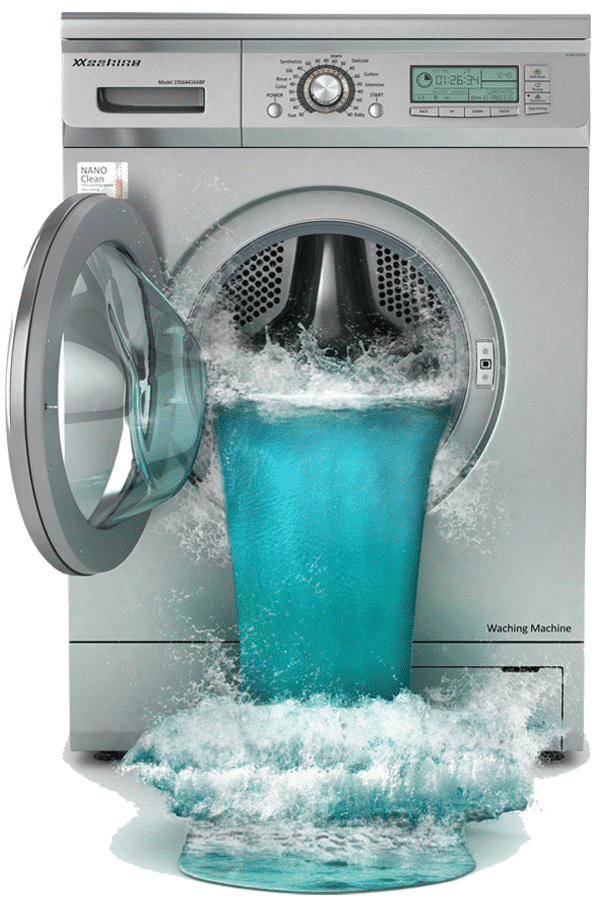
Why Use the Action 1 Restoration Process!
The success of cleanup, repair, and restoration from water and flood damage is largely dependent on the quick response as well as the use of the appropriate materials and restoration procedures. Otherwise, homes and commercial spaces may become condemned and equipment and furniture totally useless.
- Emergency call and response
- Inspection and assessment of water and flood damage
- Removal/extraction of water from the affected property/belongings
- Complete drying process and dehumidification
- Thorough cleanup, deodorization and sanitation
- Restoration procedures
Action 1 Restoration helps mitigate the destructive effects of water, especially when caused by floods by accurately assessing the affected property and comes applies the best removal and restoration plan. Action 1 uses high-tech water removal equipment to not only extract water and dry your furniture, appliances and personal belongings, but also detect hidden moisture.
The water removal and restoration services offered by Action 1 include:
- Water extraction and rapid drying
- Dehumidification and deodorization
- Cleaning, disinfection and restoration of household goods and personal effects
- Sewage cleanup and plumbing repairs
- Demolition and complete reconstruction
- Personal property removal and storage
- Mildew and mold prevention
- Locating and repairing sources of water leaks
- Coordination with insurance claims
- Water damage tips
- Commercial water damage
How Our 6 Step Restoration Process Works

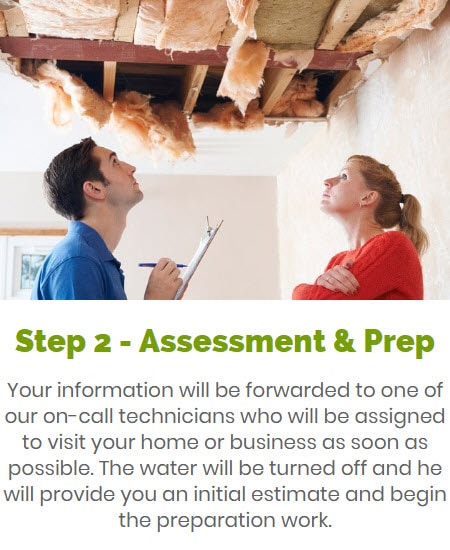

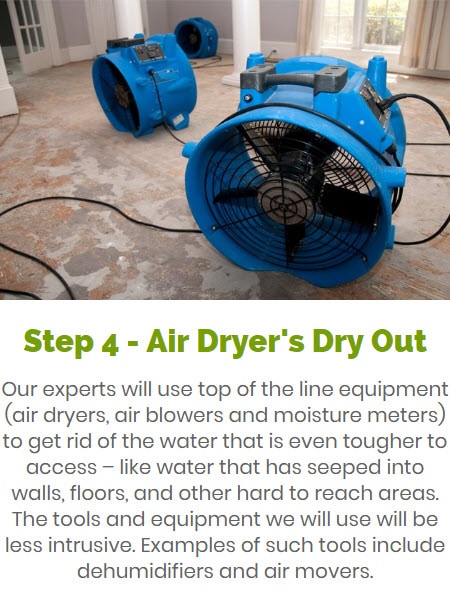

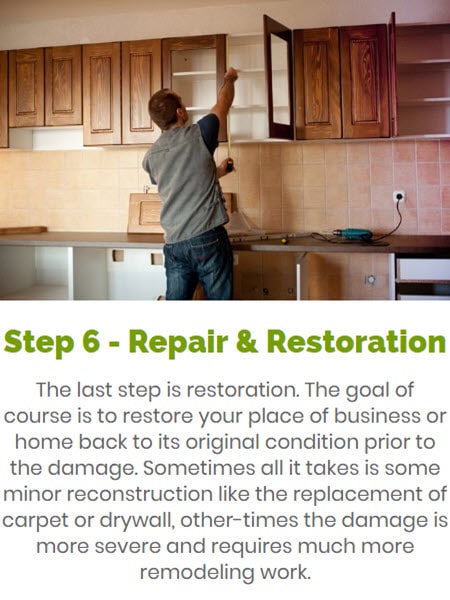
Additional Details on Our Process
- Call Us ASAP
- Assessment. Once you place a call to Action 1 Restoration, we will send our local team of qualified experts to inspect and assess the sort of damage that your building or home may have sustained after the storm or flood. This inspection allows them to determine the most appropriate course of action for restoring your home. In some cases, they may conduct the inspection alongside a representative of your insurance company to make it easier for them to file a claim on your behalf. Removal and Extraction. After the initial assessment, the team brings in specialized equipment, namely high-powered vacuums and tubes for removing the remaining water from your home. This sort of commercial equipment is so powerful that it can remove the floodwaters from inside your home in a matter of minutes, preventing any further damage upon the room’s contents.
- Drying out or de-humidification. Once all of the excess water has been suctioned out of your home, the team then works on lowering the humidity inside. To do this, they bring in dehumidifiers, large air movers, and ozone generators to reduce the moisture in the air. Since no chemicals are used in the process, it’s a very non-toxic way to purify and deodorize the stale air.
- Clean-up and Disinfection of Restorable Items. To prevent mold growth, other special techniques could be applied to certain affected areas in the home. Any personal items that may have been drenched are also examined to see if they can still be salvaged. The ones that qualify are subjected to further processing to rid them of any leftover moisture so that they can be restored to their pre-water damaged condition. This process also involves a few rounds of disinfection to provide the growth of mold and fungus in the affected home or on other personal items.
- Repair and Restoration. The last step in the restoration process, this usually involves demolishing, replacing, or rebuilding affected areas of the home. Depending on the level of water damage sustained, it ranges from something as simple as repainting the walls with a coat of fresh, waterproof paint, or something as drastic as taking out entire panels of the wall and replacing them with sturdier material to build a whole new room. Your attending technician often has the final say on what else needs to be done. S/he would have been trained to assess any kind of situation to determine whether a small or big repair is needed to restore your home or office back to its original condition.

